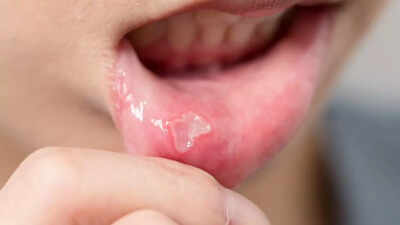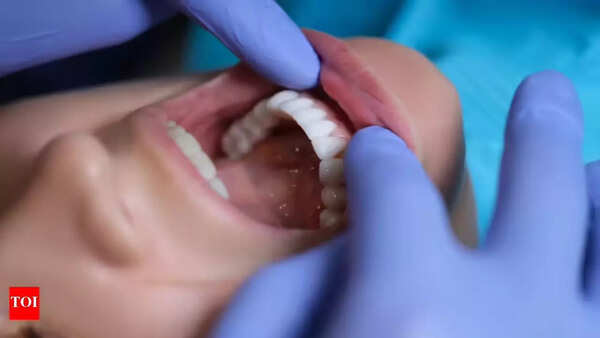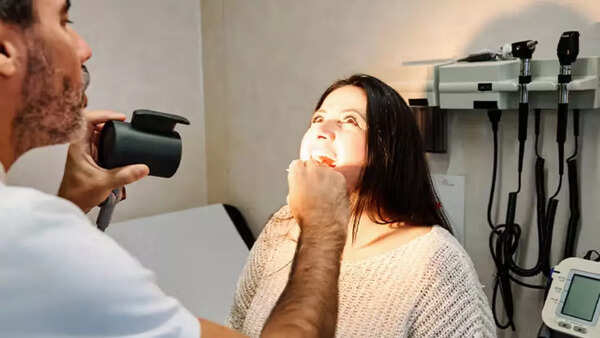
Oral cancer is a serious medical condition that develops in the tissues of the oral cavity, affecting various parts of the mouth, including the lips, tongue, gums, inner cheeks, and the roof or floor of the mouth.
Oral cancer is also known as mouth cancer, where in some cases, the cancer may involve the oropharynx, which is the area at the back of the throat. This often starts as a painless sore or patch which sometimes may go unnoticed in the early stages. Therefore, regular dental checkups and self-examination are the key to diagnosing oral cancer. Though it can affect anyone, certain lifestyle factors like tobacco and alcohol use significantly increase the risk.
Early detection and prompt treatment are key to improving outcomes and survival rates. Check below in-depth signs, symptoms and prevention against mouth or oral cancer.
What is oral cancer
Oral cancer, also known as mouth cancer, is a type of head and neck cancer that develops in the tissues of the oral cavity. This includes areas like the lips, tongue, cheeks, gums, floor and roof of the mouth, and sometimes the oropharynx (the part of the throat at the back of the mouth).
It usually appears as a persistent sore, patch, or lump that doesn’t heal and can be mistaken for a less serious issue in its early stages.If left untreated, oral cancer can spread to nearby structures including lymph nodes, other parts of the head and neck, and in advanced cases, to distant organs. Despite being potentially deadly, oral cancer is highly treatable when diagnosed early.
Who is most affected by oral cancer
Oral cancer typically affects people aged 60 and older, but it can also develop in younger individuals.
Statistically, men are twice as likely to develop it compared to women. Among different racial groups, white men have a higher incidence rate than Black men. Approximately 11 in 100,000 individuals are diagnosed with oral cancer in their lifetime.This cancer is particularly concerning because many of its early symptoms are painless and subtle, leading to delayed diagnosis and treatment in many cases.

Oral cancer symptoms
Oral cancer often presents as persistent changes in the mouth that do not go away. These can include:Visible signs:
- White, red, or mixed patches (leukoplakia, erythroplakia, or erythroleukoplakia)
- Sores or ulcers that bleed easily and don’t heal in 2 weeks
- Thickening or lumps in the cheek, gums, or tongue
- Crusty or rough areas on lips or inside the mouth
Sensory and functional symptoms:
- Numbness or unexplained pain in the mouth or neck
- Difficulty or pain when chewing, swallowing, or speaking
- Unintentional weight loss
- Chronic earache or sore throat
- Persistent bad breath
These symptoms may mimic other conditions like infections or ulcers, but their persistence should raise concern.

Oral cancer: Self-exam tips for early detection
Performing a monthly self-exam can help identify unusual changes early:
- Examine your lips, gums, tongue, cheeks, and roof/floor of the mouth.
- Look for patches, sores, lumps, or discolored areas.
- Feel your neck and jaw for lumps or swelling.
- Use a bright light and mirror to get a full view.
If anything unusual is found, consult a healthcare professional immediately.

How oral cancer impacts the body
Oral cancer can significantly impair a person’s ability to speak, chew, swallow, and even breathe, depending on the location and extent of the tumor. When it affects the oropharynx, it may lead to what is called oropharyngeal cancer, which impacts the base of the tongue, soft palate, tonsils, and the back of the throat.The oral cavity, where oral cancer typically starts, includes:
- Lips
- Gums
- Inner cheeks
- Front two-thirds of the tongue
- Floor of the mouth (under the tongue)
- Hard palate (roof of the mouth)
- Area near the wisdom teeth
Oral cancer: Causes and risks factor
Oral cancer begins in squamous cells, which are thin, flat cells that line the inside of the mouth. When these cells undergo mutations—usually due to prolonged exposure to carcinogens—they start to multiply uncontrollably and form tumors.Major risk factors
- Tobacco use: Smoking or chewing tobacco is responsible for the majority of oral cancer cases.
- Excessive alcohol consumption: Alcohol irritates mucous membranes and increases cancer risk, especially when combined with tobacco use.
- HPV infection: Human papillomavirus, especially strain HPV-16, has been linked to oropharyngeal cancers.
- Excessive sun exposure: Can cause lip cancer if lips are not protected with SPF.
- Poor oral hygiene and chronic irritation from broken teeth or ill-fitting dentures.
- Family history of cancer or genetic predispositions.
According to Healthline reports, about 25% of oral cancer cases occur in individuals without any of the above risk factors, which underscores the importance of regular oral screenings.
How oral cancer is diagnosed
Diagnosis typically begins during routine dental or medical exams. Dentists often play a key role in early detection.Diagnostic methods include visual and physical exam, brush biopsy, incisional biopsy, laryngoscopy or pharyngoscopy. Once a lesion is confirmed as cancerous, additional tests are done to determine staging, which influences treatment options.
Stages of oral cancer
Oral cancer is staged using the TNM system:
- T1: ≤2 cm
- T2: >2 cm but ≤4 cm
- T3: >4 cm
- N (Lymph nodes): Indicates if cancer has spread to lymph nodes.
- M (Metastasis): Shows whether the cancer has spread to other organs.
Staging helps doctors decide the most effective treatment and estimate the patient’s prognosis.
How to prevent oral cancer
While not all cases can be prevented, the risk can be significantly reduced through:
- Avoiding tobacco and limiting alcohol use
- Using SPF lip balms and sun protection
- Eating a healthy diet rich in fruits and vegetables
- Getting the HPV vaccine
- Maintaining oral hygiene
- Regular dental screenings every 1–3 years (depending on age)
Oral cancer: Life after treatment
Life after oral cancer treatment varies. Some patients experience minor changes, while others face long-term impacts on speaking, chewing, and appearance. Support from reconstructive surgery, physical therapy, speech therapy, and mental health counseling may be needed. Ongoing check-ups are essential, as recurrence or secondary cancers are possible.Also Read | Is the heart’s ageing reversible? New study says ‘yes’; here are a few lifestyle tips to support heart health

 9 hours ago
45
9 hours ago
45




























 English (US)
English (US)